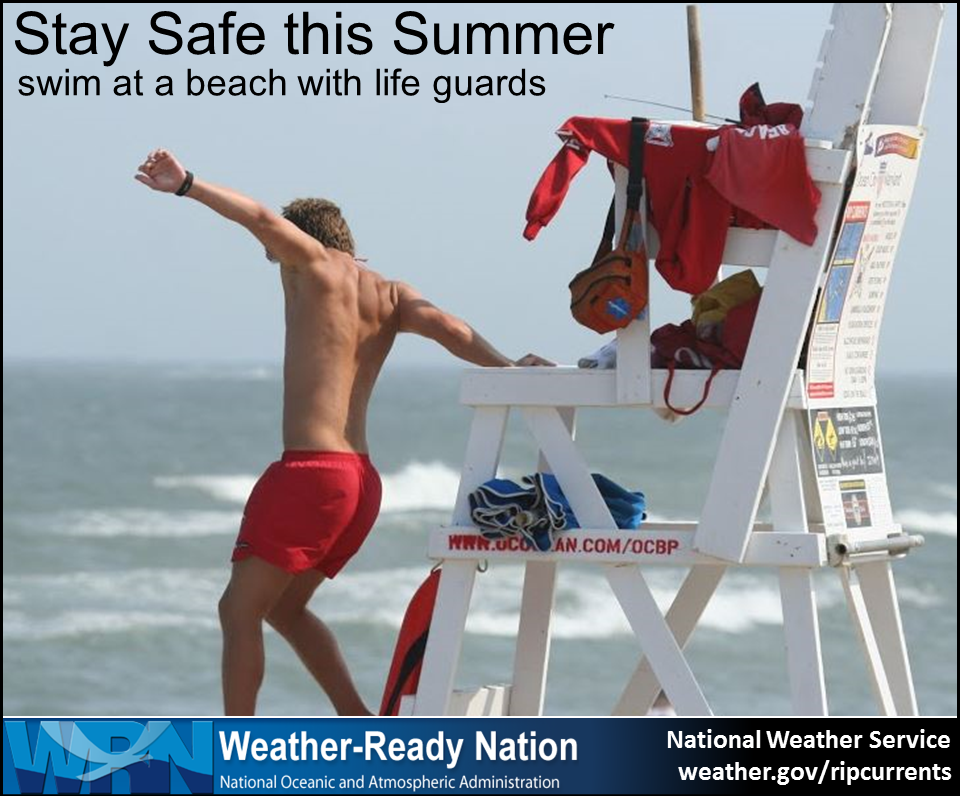Please help the National Weather Service spread these important safety messages on social media! Everyone is welcome to use the text and images provided below to help the NWS build a Weather-Ready Nation.
Facebook
Sneaker waves are unpredictable waves which happen most often on the west coast. They are large waves which can appear without warning and travel much farther up the beach than normal, even when the ocean seems calm. When at the beach, always stay alert and weather ready. http://www.ripcurrents.noaa.gov/beach_hazards.shtml #BeachSafety #SummerSafety
Twitter
Sneaker waves are unpredictable waves which happen most often on the west coast. http://www.ripcurrents.noaa.gov/beach_hazards.shtml
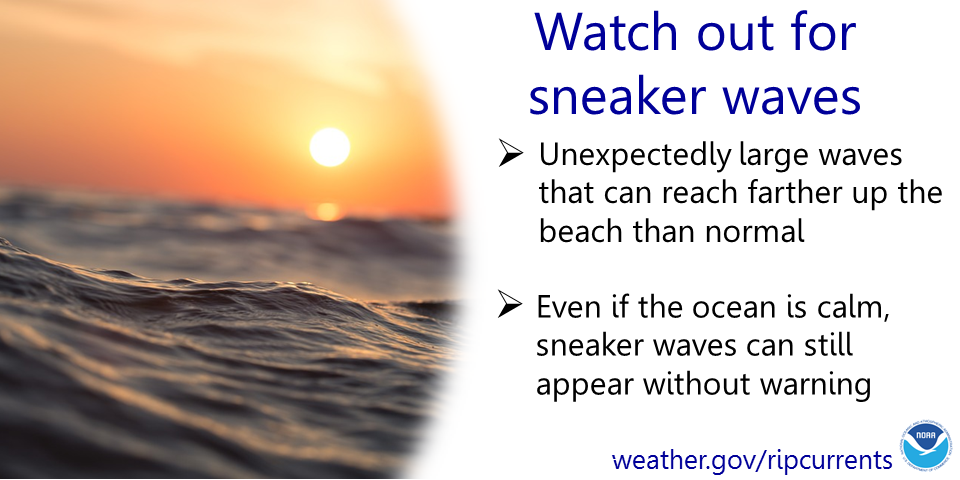
Facebook
The United States Lifesaving Association (USLA) estimates that over 100 people die each year due to rip currents the in US. Break the Grip of the Rip®! www.ripcurrents.noaa.gov/ #SummerSafety #BeachSafety
Twitter
Every year, over 100 people die from rip currents in the US. Break the Grip of the Rip®! https://1.usa.gov/QZIviu #BeachSafety #SummerSafety
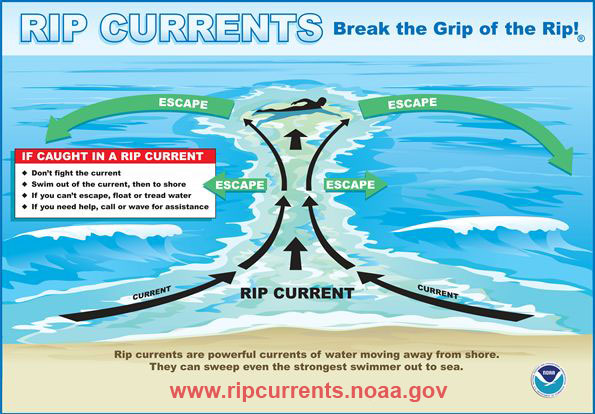
Facebook
Plunging waves are the most dangerous type of breaking waves. With a lot of force, they can easily slam your body into the ocean floor. Many spinal and head injuries are caused this way. Surging waves can also be dangerous as they can easily knock both children and adults over as they rush up and back down the beach. Even small waves can be dangerous. Remember, Stay Dry When Waves Are High. www.weather.gov/beach #BeachSafety #SummerSafety
Twitter
Waves can be dangerous. Remember, Stay Dry When Waves Are High. www.weather.gov/beach #BeachSafety #SummerSafety

Facebook
The United States Lifesaving Association (USLA) advises beachgoers to enter the water feet first. The USLA says, "serious, lifelong injuries, including paraplegia, occur every year due to diving headfirst into unknown water and striking the bottom." Check for depth and obstructions before diving. www.weather.gov/beach #BeachSafety #SummerSafety
Twitter
To avoid injuries at the beach, always enter the water feet first.www.weather.gov/beach #BeachSafety #SummerSafety
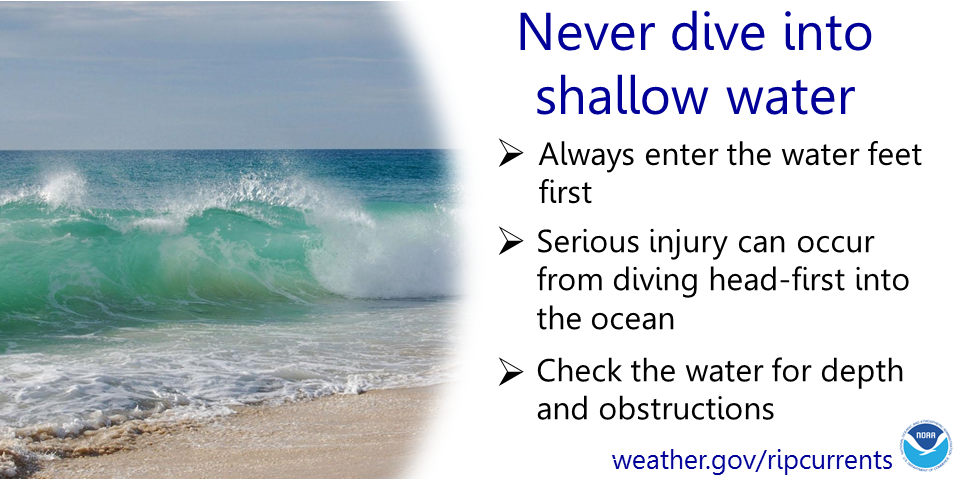
Facebook
Trips to the beach aren't always fun in the sun. From strong rip currents to dangerous marine life, discover the Nine Dangers at the beach. http://oceanservice.noaa.gov/news/features/july13/beachdangers.html #BeachSafety #SummerSafety
Twitter
Have fun but be safe at the beach! Discover the Nine Dangers at the beach. https://1.usa.gov/1GIfD3L #BeachSafety #SummerSafety
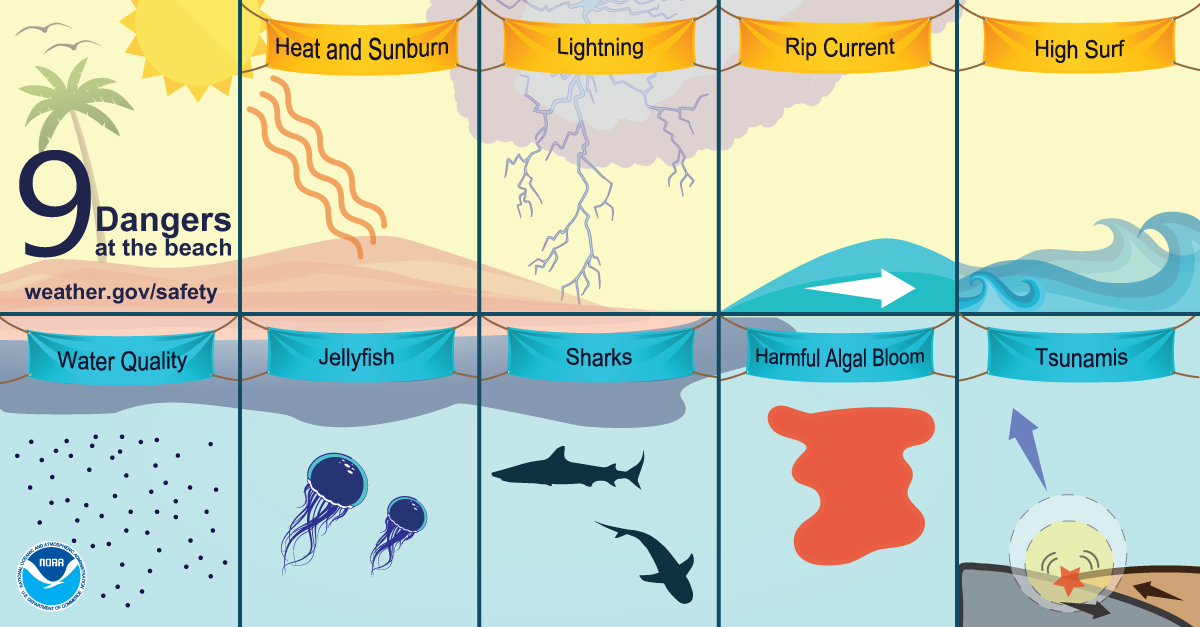
Facebook
Sunscreen is a must for everyone under the sun! Protect yourself from getting burned. www.weather.gov/heatsafety #BeachSafety #SummerSafety
Twitter
Sunscreen is a must for everyone under the sun! Protect yourself from getting burned. www.weather.gov/heatsafety #BeachSafety #SummerSafety
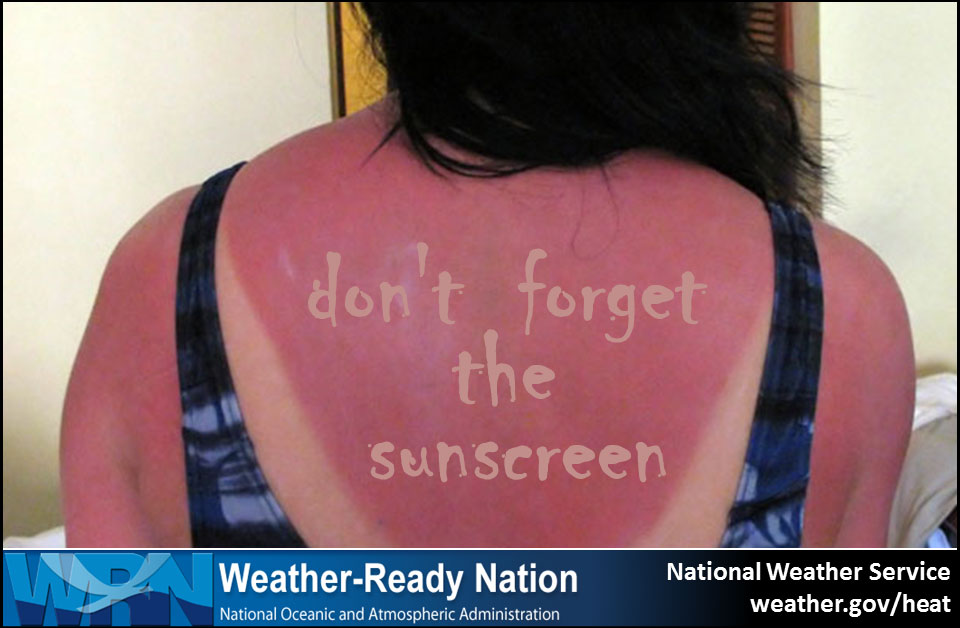
Facebook
Protect yourself from the heat while at the beach. Drink plenty of water to stay hydrated and apply sunscreen regularly. www.weather.gov/heatsafety #SummerSafety #BeachSafety
Twitter
Keep cool! Stay hydrated and apply sunscreen at the beach. www.weather.gov/heatsafety #SummerSafety #BeachSafety
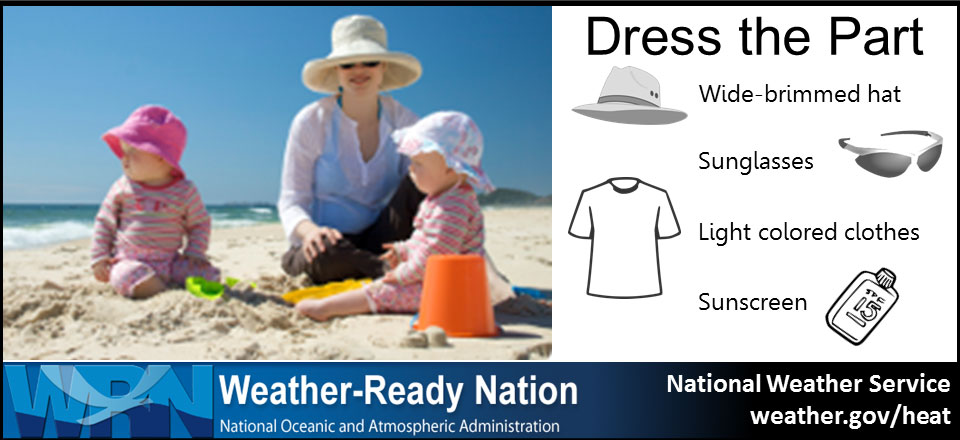
Facebook
Only swim at a beach with on duty lifeguards. The chance of drowning at a beach with lifeguards is 1 in 18 million. http://www.ripcurrents.noaa.gov #SummerSafety #BeachSafety
Twitter
Only swim at a beach with on duty lifeguards. http://www.ripcurrents.noaa.gov/ #SummerSafety #BeachSafety
